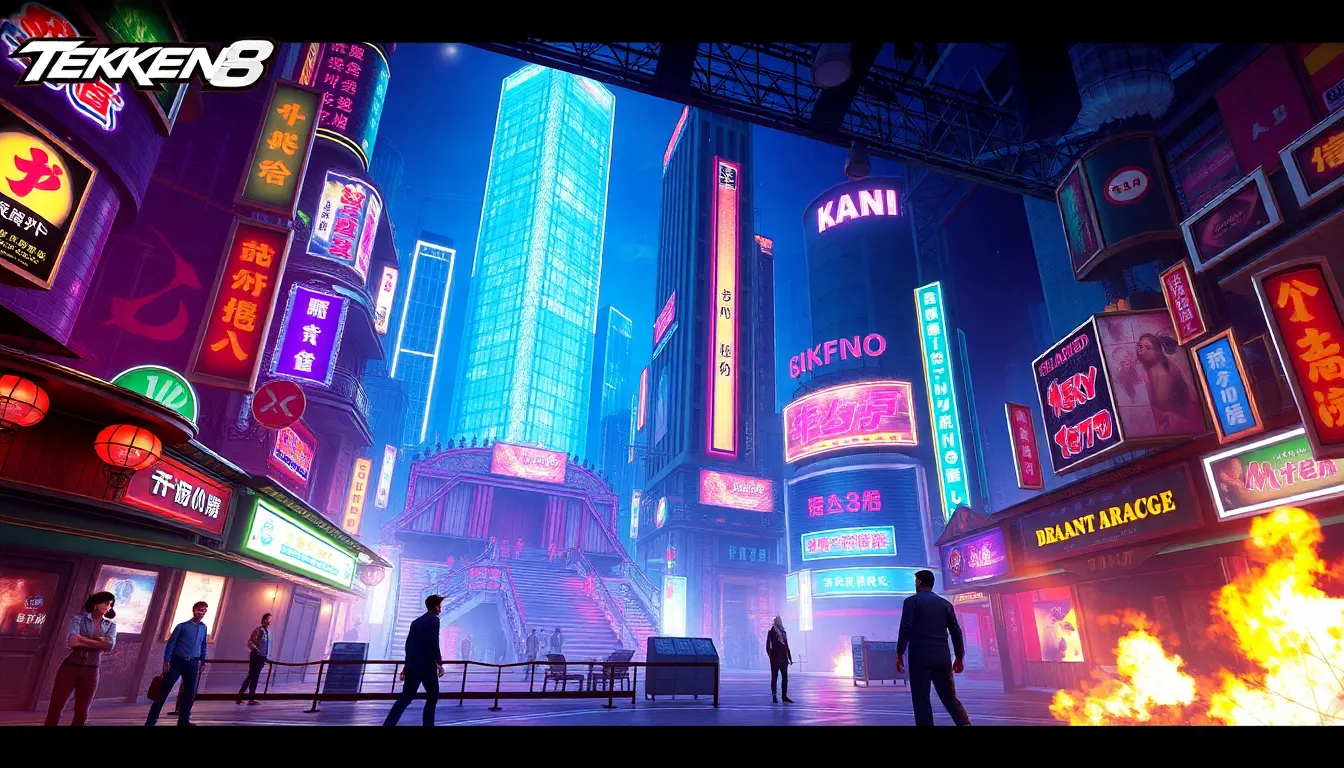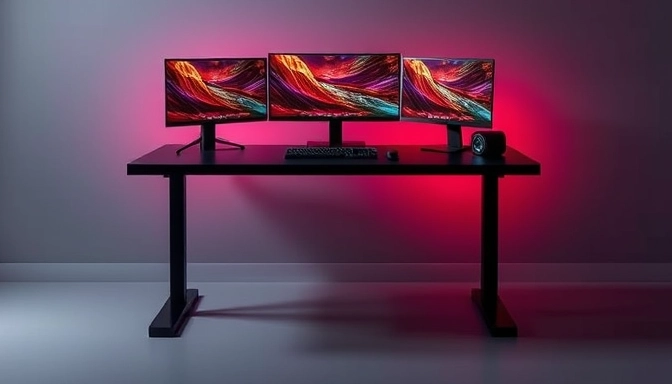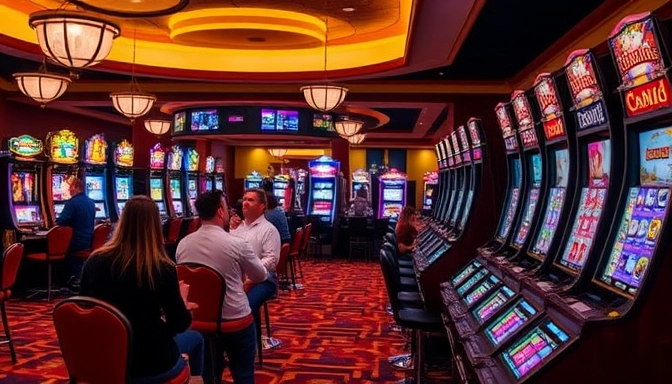Table of Contents
ToggleIn the world of Tekken 8, the stages aren’t just backdrops; they’re the battlegrounds where epic showdowns unfold. Picture this: you’re in a vibrant cityscape, dodging punches while the neon lights flicker like your hopes of winning. Each stage brings its own flair, from stunning visuals to unique hazards that can turn the tide of battle faster than a well-timed combo.
Overview of Tekken 8 Stages
Tekken 8 features diverse stages that enhance gameplay and immersion. Each stage immerses players in a unique environment, such as bustling city squares or serene landscapes. Visually, stages captivate with intricate details and vibrant colors, adding depth to each fight.
Interactive elements populate these stages, creating dynamic combat scenarios. Environmental hazards, like falling items or shifting platforms, can alter the course of battles, making players adapt their strategies. Fighters often leverage their surroundings to gain advantages, showcasing the importance of stage awareness.
Stages cater to various styles of play, offering ranged and close-quarters combat options. Some arenas allow for more aerial maneuvers, while others prioritize ground-based techniques. Every setting encourages players to explore different tactics and character abilities.
Cultural themes resonate throughout Tekken 8 stages, reflecting the diverse backgrounds of its characters. For instance, a stage may evoke the spirit of Japan with traditional architecture, while another might bring a futuristic setting to life. Such details enrich the game’s universe, enhancing player engagement.
Dynamic weather effects contribute to the realism of each stage. Rain, fog, or shifting daylight can change the mood and challenge fighters. These atmospheric conditions not only add visual interest but also influence gameplay, making precise timing even more crucial.
Overall, the stages in Tekken 8 play an essential role in defining the game’s experience. Each venue offers unique challenges and opportunities, pushing players to adapt their strategies while maximizing the thrill of combat.
Design and Aesthetics

Stages in Tekken 8 emphasize design and aesthetics, enhancing immersion and gameplay. Each stage captivates players with unique visuals and thematic elements.
Visuals and Themes
Stages showcase vibrant color palettes, intricate details, and distinct cultural themes. Bright cityscapes filled with neon lights create energetic backdrops, while serene landscapes offer tranquil settings. Each environment reflects the characters’ diverse backgrounds, enriching the overall narrative. Players experience varied atmospheres, from bustling markets to tranquil parks, with every stage contributing to the story’s depth. Characters and settings resonate, providing engaging gameplay experiences.
Environmental Interactions
Interactive elements define the stages, allowing players to manipulate their surroundings. Features include destructible objects, shifting platforms, and environmental hazards that impact tactics. Players face challenges like falling debris or sudden terrain changes, necessitating strategic adaptations mid-fight. Dynamic environments encourage creativity in combat styles, enhancing the thrill of each encounter. Stages evolve with in-game actions, creating engaging, exciting scenarios that require quick thinking and adaptability.
Stage Mechanics
Stage mechanics in Tekken 8 significantly impact combat dynamics. Players must understand the various interactions between fighters and their surroundings.
Bound and Wall Mechanics
Bound mechanics initiate special conditions during fights. These mechanics activate when a character connects a specific move, causing the opponent to bounce off the ground. Wall mechanics arise when fighters are close to the stage’s edges, creating unique offensive and defensive opportunities. Players can capitalize on wall splats to unleash powerful combos or maintain pressure. Knowing how to use these elements effectively defines competitive strategies.
Stage Hazards and Features
Stage hazards introduce interactive elements into gameplay. Environmental features, such as falling objects or dangerous scaffolding, demand player awareness. Hazards can turn the tide of a match, affecting movement and positioning. Additionally, destructible objects provide tactical advantages, as players can use them to create obstructions or launch attacks. Features like shifting platforms require quick thinking and adaptability. Engaging with stage hazards enhances the overall combat experience, making every encounter unique.
Notable Stages in Tekken 8
Tekken 8 features a range of notable stages that enhance gameplay and immersion. Each stage offers distinct environments that can significantly alter the dynamics of combat.
Classic Returns
Familiar locations make a comeback, bringing nostalgia to veteran players. Iconic stages like the “King’s Arena” reappear, allowing fighters to showcase their skills in a beloved setting. “The Temple” returns with its serene atmosphere, complementing the intensity of battles. These classic stages retain their signature designs while incorporating modern graphics that elevate visual appeal. Players often find themselves strategizing based on the unique features of these renowned stages, enhancing the overall experience through familiarity and nostalgia.
New Additions
Innovative stages in Tekken 8 introduce fresh gameplay experiences. One standout location is “Cyber City,” featuring futuristic architecture and neon lights that create an electrifying atmosphere. Another stage, “Forest of Tranquility,” offers stunning natural landscapes that evoke calmness in the heat of battle. Each new addition integrates interactive elements that challenge players to adapt their strategies. Unique hazards like shifting platforms or environmental traps encourage creativity in combat styles, ensuring that every match feels fresh and dynamic while pushing fighters to rethink their approaches.
Strategies for Stage Selection
Choosing the right stage in Tekken 8 can significantly influence the outcome of a match. Players should consider both offensive and defensive tactics when selecting stages, as specific environments cater to different play styles.
Offensive vs. Defensive Play
Offensive strategies thrive on stages that offer ample space and opportunities for aggressive maneuvers. Environments with fewer obstacles allow players to execute combos effectively. Defensive players benefit from stages with walls, offering protection against relentless attacks. Positioning becomes crucial when maintaining distance and controlling the pace of the match. Players often analyze stage layouts to determine the best approach for their characters.
Impact on Character Matchups
Character selection interacts closely with stage choice, affecting match dynamics. Certain fighters excel in specific environments, leveraging stage features for advantages. For example, speedy characters perform well in open areas, allowing for quick assaults. Conversely, powerhouses may favor stages with walls, enabling effective wall combos. Awareness of each character’s strengths and weaknesses is essential for optimizing stage selection. Players frequently experiment with different combinations to gain insights into successful strategies.
The stages in Tekken 8 are more than just fight locations; they’re integral to the gameplay experience. Each vibrant setting introduces unique challenges and opportunities that demand strategic thinking and adaptability. Players must navigate environmental hazards and interactive elements, making every match unpredictable and exciting.
With a mix of classic and new stages, Tekken 8 offers a rich tapestry of combat environments that cater to various play styles. Understanding how to leverage stage mechanics can be the difference between victory and defeat. As players continue to explore these dynamic battlegrounds, the thrill of combat in Tekken 8 will only grow, ensuring that every encounter remains fresh and engaging.




